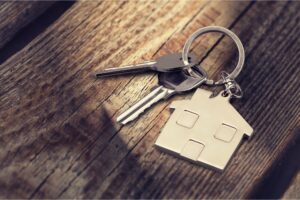
The Housing Act 2004 set out the provisions for Landlord licencing. For large Houses in Multiple Occupation (large HMO) a landlord must have a mandatory licence. A large HMO is defined as:
- The property is rented to 5 or more people who form more than 1 household
- Some or all tenants share toilet, bathroom or kitchen facilities
- At least 1 tenant pays rent (or their employer pays it for them)
Sections 79, 80 and 81 of the Housing Act 2004 allow for selective landlord licencing and this is where it gets a little more complicated. In this article we will take a look at what selective licencing is, who needs to be licenced, what the process is and what the implications are for not being licenced when needed.

What is Selective Licencing?
Section 80 of the housing Act 2004 allows for the licencing of properties in a local housing authority area subject to certain housing conditions being met:
- low housing demand (or is likely to become such an area)
- a significant and persistent problem caused by anti-social behaviour
- poor property conditions
- high levels of migration
- high level of deprivation
- high levels of crime
If a Local Housing Authority believe that any of the conditions relating to these housing challenges are met, they will be required to take reasonable steps to consult with persons likely to be affected. After this consultation the results of the consultation should be published by the authority and then they can apply for a confirmation of selective licencing designations. Once confirmed the local authority can require any landlord in the private rented sector to become licenced. This means that certain areas will require licencing and some won’t so a landlord will need to check the local area licencing requirements by speaking to the relevant authority.
How to get a licence
For a new licence a landlord will need to apply directly to their local authority and will need to supply the following information:
- Property details: Property use and occupation numbers
- Property interested Parties: Details of all parties with an interest in the property such as managing agents, mortgage lenders, leaseholders and the proposed licence holders
- Property management and fit and proper declaration: details of property management arrangements and details of any unspent convictions
- Health and safety provisions: Details of things such as fire safety installations, Legionella risk assessments and any other health and safety arrangements such as a gas safety certificate if required.
- Property information: dimensions of the property, including all rooms in square meters, bathroom facilities, Kitchen facilities and fire alarms
Once the application has been made, it will be assessed. It is important to note that it can be rejected.
If approved the landlord will receive their licence and need to abide by the conditions of the licence. It is important to understand, here that a licence is needed per property.
Landlords will need to regularly check their local authority’s website to keep up-to-date as new applications for selective licencing designation happens regularly.
What If I don’t have a licence?
If you don’t have a licence but need one we recommend you apply as soon as possible and rectify the situation. If you do not, then the local authority has the power to:
- prosecute, which carries an unlimited fine
- fine landlords up to £30,000
- issue a management order, where the Council takes over the management of the HMO or licenced property
- issue rent repayment orders, where up to 12 months of collected rent would need to be repaid
Not all landlords will need a licence unless they are renting properties in a selective licence designated area. The landlord will need to check with their local authority and, if required, get a licence and then comply with the terms of that licence.



